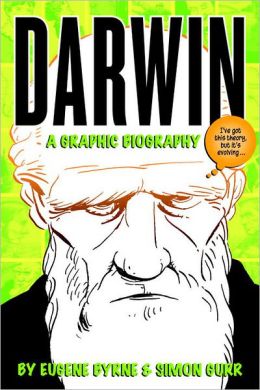
It is a credit to the professionalism of the staff at the California State Library in Sacramento that my request for a bound volume of the journal The Mariner’s Mirror from 1975—a request, I’m willing to wager, unique in their experience—raised not a single eyebrow. Had they asked, though, I would have been willing to explain that the ultimate reason that I needed a couple of obscure papers from a journal devoted to detailing the historical minutia of the Royal Navy was that Skip Evans left NCSE in 2004 without finishing all of the projects to which he was committed.
Here’s the story. As longtime members of NCSE will recall, Evans worked for NCSE from August 2001 to April 2004. While at NCSE, he impressed Gordon Uno, who was then on the editorial board of the American Institute for Biological Sciences’s magazine BioScience, by his quick wit—in addition to his interests in science education, Evans was also devoted to improvisational comedy. Uno suggested that Evans review Jay Hosler’s The Sandwalk Adventures—a graphic novel in which Darwin explains the rudiments of evolution to a follicle mite dwelling in his left eyebrow—for BioScience.
When Evans left, however, he hadn’t started on the review, and I volunteered to write it in his stead. At the time, I wasn’t particularly interested in graphic novels, having read only perhaps a dozen and owning fewer, but I found myself impressed with and captivated by Hosler’s, and I wrote a glowing review, published in 2004. To my surprise, the review led to my appearance, along with Hosler, on NPR’s Morning Show on February 14, 2005, where we were interviewed by Neda Ulaby as part of her continuing Science and Art series. All of a sudden I was a national expert on evolution in comics!
Nevertheless, I rested on my laurels until 2012, when the exigencies of helping to craft NCSE’s quarterly column for Evolution: Education and Outreach suggested that a review of Hosler’s Evolution: The Story of Life on Earth would be a good idea. Certainly it was appropriate for the audience: as I wrote, “Evolution manages to explain a remarkable amount of evolutionary biology within its pages, with a dazzling array of interesting, up-to-date, and not yet overused scientific discoveries presented,” especially when it appears in a format that students will appreciate and find accessible.
The third time is the charm, though, and in late 2012, when I received a review copy of a third graphic novel about evolution—Eugene Byrne and Simon Gurr’s Darwin: A Graphic Biography—I figured that a review for Evolution: Education and Outreach was in order. Like Hosler’s books, Byrne and Gurr’s is a delightful and painless read that deserves a wide audience. Unfortunately, as when writing the Hosler reviews, I found it hard to develop that sentiment at any great length, certainly not to the length expected of a book review. But my motto is: when in doubt, nitpick.
I found various inaccuracies in Byrne’s text to complain of—for example, I noted “Darwin is claimed not to have ‘speculated about how life had originated, only how it evolved’ (p. 83): a claim true only if ‘in public’ is understood, since Darwin famously speculated to Hooker about life originating in a ‘warm little pond’” and that “Birds are misleadingly described as descending separately from reptiles rather than as being dinosaurs in their own right”—although I like to think that I registered the fact that these were minor and didn’t affect the overall value of the book.
Daniel J. Glass, who reviewed (PDF) Darwin: A Graphic Biography for Reports of the NCSE, also liked it; I was impressed to see that he found a different inaccuracy to complain of in the text. Relating the famous anecdote in which Darwin popped a beetle into his mouth in order to collect more beetles with his freed hands, Byrne says that it was a bombardier beetle, which sprays boiling hot fluid in self-defense. Had it been a bombardier beetle, Glass observes, Darwin probably would have identified it as such in his autobiography, and not just as a carabid beetle. And he might have been permanently injured, too.
Gurr, the artist, was a harder case to nitpick. (And he was easy to compliment, I should add!) But my eye eventually alit on the depiction of Robert FitzRoy, captain of HMS Beagle. What was he doing with that thin, rather villainous, mustache? I eventually wrote that it “is part and parcel of the unsympathetic treatment he receives at Gurr’s hands,” adding “Interestingly, FitzRoy receives a respectful treatment in Byrne’s text, perhaps owing to the sympathetic portrait of the Beagle’s captain in Harry Thompson’s splendid novel This Thing of Darkness…cited in Darwin’s bibliography.”
Perched on the word “hands” in the last quoted sentence, though, is a footnote reference; and in that footnote are about three hundred words condensing the results of my research into two questions of what might seem to be—and doubtless are—of underwhelming historical significance. Did Captain FitzRoy have a mustache? And if not, why might Gurr—whose “depictions of historical figures are clearly based on a study of contemporary portraits and photographs,” as I approvingly wrote in my review—have thought otherwise? I’ll offer answers to these questions in part 2.

